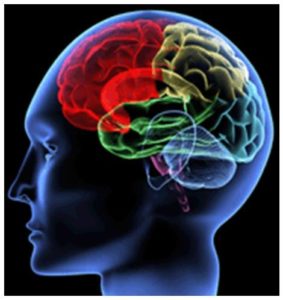Studies have shown that women are more at risk of suffering a stroke than men, and for the first time, women and their physicians are now armed with evidence-based guidelines on how best to reduce those risks.
“The take-home here is really about starting prevention earlier,” Dr. Cheryl Bushnell, an associate professor at Wake Forest Baptist Medical Center in Winston-Salem, N.C., told National Public Radio. Bushnell is the lead author of the guidelines published recently in Stroke, a journal of the American Heart Association.
“For the most part the focus of our guideline is for women who are thinking about getting pregnant,” said Bushnell, who added that that includes women who are actively trying to avoid pregnancy with birth control pills and women who are trying to become pregnant.
“The only controversy for us is that we are recommending blood pressure treatment [with medication] during pregnancy,” Bushnell says. “That’s something the obstetricians may disagree with.”
Dr. Diana Greene-Chandos, Director of Neuroscience Critical Care and Assistant Professor of Neurosurgery and Neurology at The Ohio State University Wexner Medical Center, added that women should be evaluated a little differently for stroke risk than men.
“Evaluation and management of stroke in women has some nuances that are unique to women. In particular, a woman may present with sudden pain in her face and limb, sudden nausea or sudden hiccups rather than the more common stroke symptoms seen in both sexes,” she told Natural News. “When evaluating a woman, particular attention needs to be paid to her headache history; whether she is pregnant, on oral contraceptives or on hormone replacement therapy; and if she has a history of autoimmune diseases such a lupus.”
There are several ways women can mitigate their risk of stroke, experts say. Michale J. (Mickey) Barber, M.D., an anesthesiologist and academic, as well as an age management expert who works primarily with women on heart disease/stroke prevention, offered the following tips:
— Control that blood pressure. Like other experts, Barber says she believes that keeping blood pressure under control is vital. “Many women tend to ignore or are undertreated for hypertension. The first step in many cases is to improve body composition as a drop in weight of 10 pounds can translate to a drop in systolic BP by 10 mm mercury,” she told Natural News.
— Watch low folate and vitamin B12 levels. “These levels are reflected by high homocysteine levels,” she said. “It is common in women over the age of 45 to become less and less efficient at absorbing B-12 from the gut. High levels of homocysteine increase thrombosis (clot), impair microcirculatory function and increase inflammation.”
— Diet is, as always, very important. Barber recommends a diet rich in fruits and vegetables “to provide adequate antioxidants to counter oxidative stress (inflammation).” Some of the best antioxidant foods include berries (tropical acai berries rank the highest, followed by blueberries, blackberries, cranberries, raspberries, pomegranates and strawberries); veggies like kale, spinach and broccoli; legumes like black beans and kidney beans; nuts and grains like pecans, walnuts and steel-cut oats; and chocolate (in moderation).
— Eat like a Greek. Barber recommends a Mediterranean-style diet consisting of higher intake of olive oil, legumes, unrefined cereals, fruits and vegetables, as well as moderate-to-higher consumption of fish and limited animal fats. Obesity is a huge stroke factor.
— Exercise. Making time for vigorous physical exercise “like your life depends on it” is vital, says Barber. This is especially true as we age; a sedentary lifestyle is not conducive to a long, productive life.
— Limit alcohol and stop smoking. Some alcohol — like red wines — has been found to be beneficial for the heart, in limited amounts, but there is nothing good that comes from smoking. Besides increasing your risk of cancer, smoking is devastating to your heart and cardiovascular system, and this can be especially true for women.
Read more: Natural News



